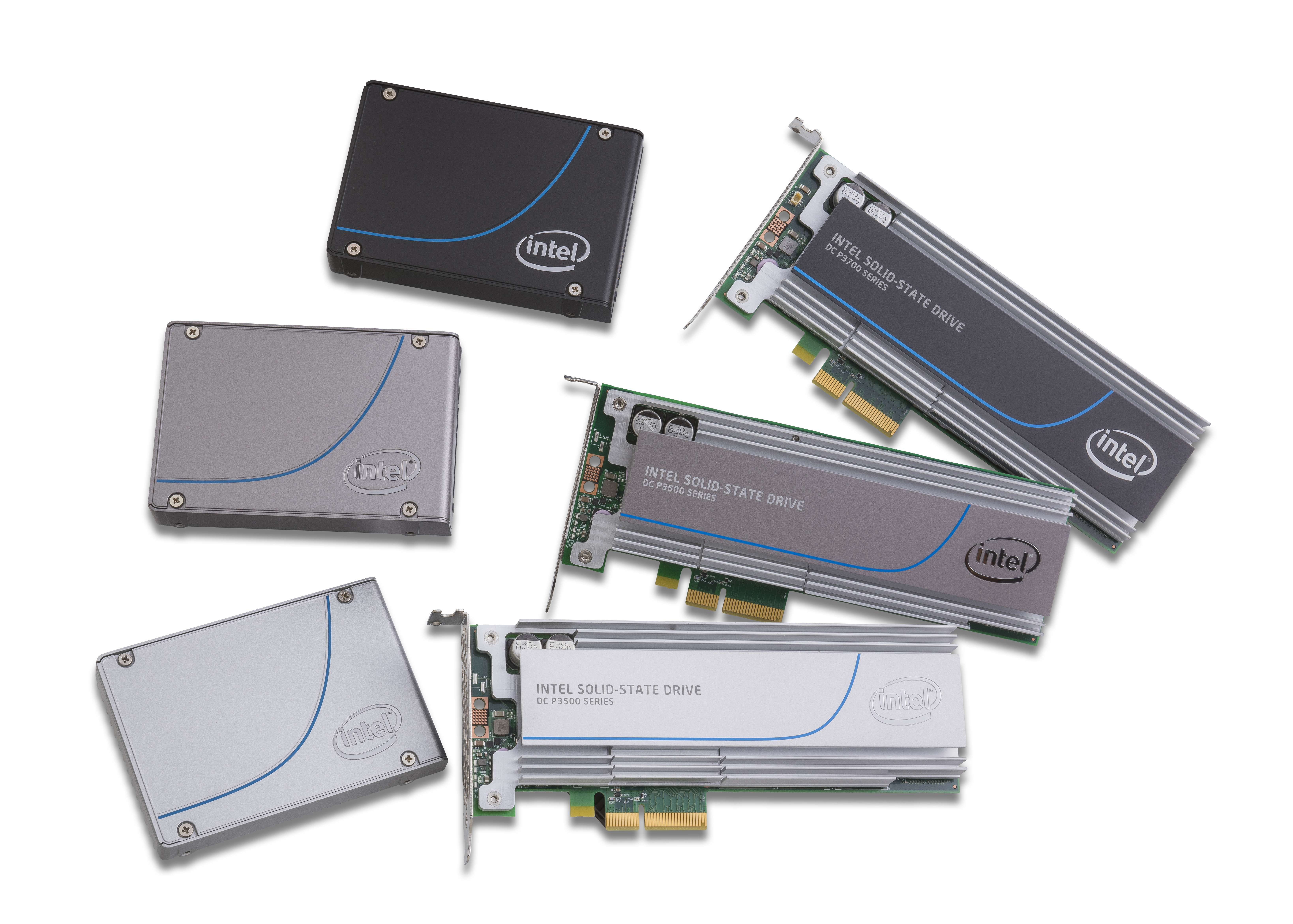Intel SSD DC P3700 800GB and 1.6TB Review: The Future of Storage
With the introduction of its SSD DC P3700, P3600, and P3500, Intel is giving us our first taste of the PCIe-based NVMe specification. We take the flagship P3700 for a drive in its 800 GB and 1.6 TB incarnations. Just how fast is the future of storage?
Intel SSD DC P3700: NVMe Enterprise Storage
PCI Express-based SSDs are nothing new. OCZ and Fusion-io have been pumping them out for years. The interface facilitates freedom from the physical and architectural limitations of SATA. In the past, though, PCIe SSDs were simply SATA-attached drives glued together with an HBA on a single add-in card. There were notable exceptions, such as Micron's P320h and P420m, which used a native PCIe-to-NAND controller. But most were just brute force attempts at higher performance. Even previous Intel products like the SSD 910 were a group of solid-state devices connected to Hitachi SAS adapters.
Clearly, they employed a form factor different from the rotating hard drives we're accustomed to reviewing. But architecturally, PCIe-attached SSDs were still familiar. Some boasted ridiculously fast performance, but they always felt like niche products. There was no one standard binding them together, giving the product class legitimacy.
With the introduction of NVM Express, an official interface specification for accessing solid-state storage through PCI Express, manufacturers now have a set of guidelines that not only releases them from the limitations of AHCI, but also provides a wide range of interoperability benefits. In the next section, we'll take a deep dive into the specifics of NMVe and its various incarnations. Before that, though, let's take a look at Intel's newest NVMe-based drives (the first of their kind to land in Tom's Hardware's lab).
Eager to move the dial on NVMe right out of the gate, Intel is introducing a full range of compatible drives. Officially dubbed the SSD DC P3700, P3600, and P3500 the company's latest represent the same general use cases as their SATA-based predecessors. Mainly, the three product families are differentiated based on write performance and endurance, just as we've seen so many times before. Capacities also vary, ranging from 400 GB to a massive 2 TB. All versions are available in either a half-height, half-length (HHHL) PCIe add-in card or a 2.5", 15 mm-thick SFF-8639 form factor.
*ratings are "up to"
Compared to the performance figures we're used to seeing in our SSD reviews, these numbers are promising. All three line-ups promise good read performance for both sequential and random operations. Write performance also appears strong, scaling across the trio of product families.
Of course, if you're already familiar with the existing PCIe-based storage hardware out there, these specifications aren't as obscene. In fact, contenders like Micron's P320h and P420m match or exceed many of those bullet points. We even have an OCZ Z-Drive R4 from 2011 that provides similar performance in certain areas.
Get Tom's Hardware's best news and in-depth reviews, straight to your inbox.
So, what makes these drives better? In short, cost. The SSD DC P3500 is the most aggressively priced, selling for about $600 at a 400 GB capacity point. The 400 GB P3600 sets you back $783, while the P3700 lands at $1207. For a little bit of perspective, many enterprise-oriented PCIe-based SSDs still command anywhere from $5 to $10 per gigabyte.
For this review, we are focusing on the 800 GB and 1.6 TB Intel SSD DC P3700s. Within each product family, there are big capacity-based differences that typically affect write performance. It's impressive to see write endurance exceeding 36 PB from that 2 TB model in the table below.
Before we run the SSD DC P3700 through our test suite, lets take a closer look at the technology behind NVMe.
Current page: Intel SSD DC P3700: NVMe Enterprise Storage
Next Page A Deeper Look At NVM Express-
xback In the 1st table on page 1, the "4k random write IOPS" are reversed :)Reply
(3500 scores highest, while the 3700 scores lowest) -
redgarl OCZ already went there and even made their own connector for providing more bandwith to SSD... just a shame that now Intel try to remove the carpet from beneath the feet of OCZ. Well, old tech is new tech.Reply
By the way, OCZ revodrive was priced similarly, I don't see that big fuzz from Toms here. -
Nuckles_56 "Intel's 2 TB model purportedly needs 650 LFM across the drive"Reply
What the hell is LFM? -
JeanLuc The active power consumption numbers on first table are wrong (I hope!) 35,000 watts active?Reply
Edit:
It's not actually wrong it might just be my out of date browser I'm using in the office but for me the numbers aren't lining up correctly. -
pjmelect Reply"Intel's 2 TB model purportedly needs 650 LFM across the drive"
What the hell is LFM?
Linear Feet per Minute of airflow
-
pjmelect Reply"Intel's 2 TB model purportedly needs 650 LFM across the drive"
What the hell is LFM?
Linear Feet per Minute of airflow
-
Nuckles_56 Reply13947314 said:"Intel's 2 TB model purportedly needs 650 LFM across the drive"
What the hell is LFM?
Linear Feet per Minute of airflow
Ah that makes sense now
